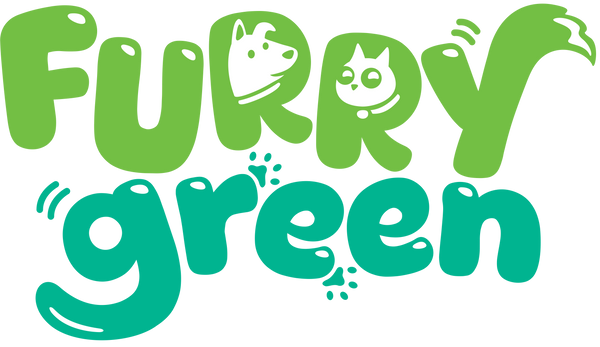
Hypoallergenic Fresh Food: Managing Pet Food Allergies with Science-Backed Nutrition
Share
Hypoallergenic Fresh Food: Managing Pet Food Allergies with Science-Backed Nutrition
Published on by Furry Green Pets
Key Takeaways
Food allergies involve immune system responses to specific proteins, most commonly beef, dairy, chicken, and wheat, requiring systematic identification through elimination diets based on scientific protocols.
Fresh, limited-ingredient diets provide superior allergen management Maintains protein structures and avoids processing chemicals and additives.
Successful elimination diets require 8-12 weeks of strict adherence to novel protein and carbohydrate sources, followed by systematic challenge phases to identify specific allergens according to research.
Urban pet owners need specialized strategies for implementing elimination diets in small spaces, including coordination with household members and domestic helpers for consistent dietary management.
Pet food allergies affect approximately 10-15% of dogs and cats according to veterinary dermatology studies, yet they remain one of the most misunderstood aspects of pet health. Unlike environmental allergies that come and go with seasons, food allergies create constant immune system activation, leading to chronic inflammation that affects not just skin, but overall wellbeing.
Understanding Pet Food Allergies and Sensitivities
The Immunological Foundation
Food allergies in pets involve complex immunological responses that differ significantly from human food allergies. Research published in the Journal of Veterinary Internal Medicine shows that when pets develop food allergies, their immune system mistakenly identifies specific proteins as threats, triggering inflammatory cascades that manifest primarily through skin and gastrointestinal symptoms.
Studies from veterinary immunology research identify the most common culprits:
- Beef proteins (32% of canine food allergies)
- Dairy products (17% of cases)
- Chicken proteins (15% of cases)
- Wheat gluten (13% of cases)
- Soy proteins (6% of cases)
Processed vs. Fresh Food: How They Affect Allergies
Not all pet foods affect the body in the same way. The way ingredients are prepared can change how your pet’s immune system reacts.
Processed Foods (like kibble or canned diets)
These are cooked at very high temperatures and often contain preservatives or additives. Heat and processing can change the shape of proteins, and sometimes the immune system mistakes these “new shapes” as dangerous. There is also a chance of cross-contamination during large-scale production, meaning traces of other proteins may be present.
Fresh, Limited-Ingredient Foods
Fresh diets usually have fewer ingredients and less processing. This means the proteins stay closer to their natural form, making them less likely to confuse the immune system. Because they are made with clear, single protein sources, it’s easier for owners and vets to track what their pet is actually eating.
👉 Important note: While fresh diets have advantages, veterinarians often recommend hydrolyzed protein diets (where proteins are broken down so the immune system doesn’t recognize them) as the gold standard for diagnosing food allergies. Fresh diets can be very helpful, but they should be planned carefully with your vet to make sure they’re safe and balanced.
Distinguishing Allergies from Food Intolerance
Many pet owners confuse food allergies with food intolerance. Research published in Veterinary Dermatology clarifies that true food allergies involve immune system activation and typically cause skin symptoms--itching, redness, ear infections. Food intolerance usually presents as digestive upset without immune involvement.
Allergic Reactions Include:
- Chronic itching and scratching
- Recurrent ear infection
- Skin redness and hot spots
- Gastrointestinal symptoms (in 30% of cases)
See more about itchy skin : see article
Food Intolerance Symptoms:
- Digestive upset after eating
- Diarrhea or loose stools
- Vomiting within hours of meals
- Bloating or gas
- Symptoms resolve quickly after food removal
Benefits of Limited-Ingredient, Fresh Food Diets

Scientific Foundation for Fresh Diets
Limited-ingredient diets (LIDs) using fresh foods offer significant advantages for allergic pets according to research in the Journal of Animal Science. These diets contain minimal ingredients--typically one protein source and one carbohydrate source--making it easier to identify and eliminate allergens.
Immunological Benefits:
Fresh proteins maintain their natural molecular structure, reducing the likelihood of immune system misidentification. Studies show that when proteins undergo minimal processing, they retain their original amino acid sequences, which the pet's immune system is more likely to recognize as safe.
Diagnostic Clarity Through Simplicity
Research from the American Journal of Veterinary Research demonstrates that fresh, limited-ingredient diets provide diagnostic clarity that's impossible with complex commercial foods. When feeding only duck and sweet potato, identifying problem ingredients becomes straightforward.
Fresh Diet Advantages:
- Ingredient transparency: Complete knowledge of every component
- Protein purity: Single, identifiable protein sources
- Processing control: Minimal heat treatment preserves protein integrity
- Additive elimination: No preservatives, colorants, or flavor enhancers
- Digestibility improvement: Fresh ingredients typically digest more easily
Nutritional Completeness Considerations
While managing allergies, maintaining nutritional completeness remains crucial according to pet nutrition research. Fresh, limited-ingredient diets require careful formulation to ensure pets receive all essential nutrients. Scientific studies emphasize that hypoallergenic formulations must balance allergen management with complete nutrition, ensuring pets don't compromise health while healing from allergic reactions.
Elimination Diet Protocols Using Fresh Food

The Gold Standard Approach
Elimination diets remain the most reliable method for identifying food allergens in pets according to veterinary nutrition research. The protocol involves feeding a diet containing only ingredients the pet has never consumed, then systematically reintroducing potential allergens to identify triggers.
8-12 Week Elimination Protocol Based on Scientific Studies:
Weeks 1-8: Stabilization Period
- Select a novel protein (duck, venison, or lamb) and a single carbohydrate source (sweet potato or pumpkin).
- Feed only these ingredients. No other treats, table scraps, or flavored medications.
- Continue strict diet adherence and document skin condition, scratching, and digestive health daily.
Weeks 9-12: Challenge Phase
- Once symptoms have resolved, reintroduce one previous ingredient (e.g., chicken) for up to two weeks.
- If symptoms return, you have identified an allergen. Stop the challenge ingredient and allow symptoms to resolve before testing the next one.
- Work with your vet to develop a long-term dietary plan based on the results.
Ready to begin? Start Your Pet's Elimination Diet with Furry Green's Single-Protein Fresh Meals!
Explore DietsImplementation Challenges in Urban Environments
City living presents unique challenges for elimination diets. In compact apartments, preventing access to family members' food, treats from helpful domestic workers, or dropped food becomes more difficult.
Urban Solution Strategies:
- Designate specific feeding areas away from human food preparation.
- Educate all household members and helpers about the strict dietary restrictions.
- Provide alternative "safe" treats made only from the approved ingredients.
Scientific Guidelines for Managing Allergic Pets
Pre-Transition Assessment
Before beginning fresh diet therapy, a comprehensive assessment by a veterinarian ensures pets receive appropriate care for existing allergic symptoms. Studies published in Veterinary Therapeutics emphasize that acute allergic symptoms may need attention before dietary changes can be effective. Severe skin infections or digestive inflammation may require additional support alongside dietary intervention.
Gradual Transition Protocols
Sudden dietary changes can worsen digestive symptoms in allergic pets. Scientific studies recommend gradual transitions over 7-10 days even when moving to hypoallergenic fresh diets.
7-Day Transition Schedule:
- Days 1-2: 75% current food, 25% new fresh diet
- Days 3-4: 50% current food, 50% new fresh diet
- Days 5-6: 25% current food, 75% new fresh diet
- Day 7 onwards: 100% new fresh diet
Integration with Supportive Treatments
Fresh diet therapy often works alongside supportive treatments for optimal allergy management. Some pets require temporary support to control severe symptoms while dietary changes take effect.
Complementary Approaches Based on Studies:
- Topical treatments for skin lesions
- Probiotics for digestive health support
- Omega-3 supplements for anti-inflammatory effects
Conclusion
The journey from chronic allergic symptoms to comfortable, healthy pets requires patience, a scientific approach, and commitment to dietary protocols. Fresh, hypoallergenic diets offer hope for pets suffering from food allergies, but success depends on proper implementation, scientific monitoring, and long-term commitment to dietary management.
For pet owners navigating the challenges of food allergies, remember that every scratching episode, every sleepless night, and every dietary trial brings you closer to identifying your pet's specific needs. With scientific guidance and dedication to systematic dietary management, allergic pets can achieve the same comfort and vitality as their non-allergic companions.
Frequently Asked Questions
What is the fastest way to know if my dog has a food allergy?
The most reliable method is a veterinarian-supervised elimination diet, which typically lasts 8-12 weeks. This involves feeding your pet a novel protein and carbohydrate they've never eaten before. While blood or saliva tests exist, veterinary research considers the elimination diet the "gold standard" for an accurate diagnosis.
Are grain-free diets the same as hypoallergenic diets?
Not necessarily. A grain-free diet only eliminates grains, but a pet can still be allergic to the protein source in the food, like chicken or beef. A true hypoallergenic diet focuses on using a novel or hydrolyzed protein that the pet's immune system is unlikely to react to. While some hypoallergenic diets are also grain-free, the terms are not interchangeable.
How long does it take for a fresh food diet to help my pet's allergies?
When used as part of an elimination trial, you may start to see improvement in skin and digestive symptoms within 4 to 6 weeks. However, for the full effect and to confirm the allergy, the diet must be strictly followed for the entire 8-12 week period as recommended by veterinary protocols.
